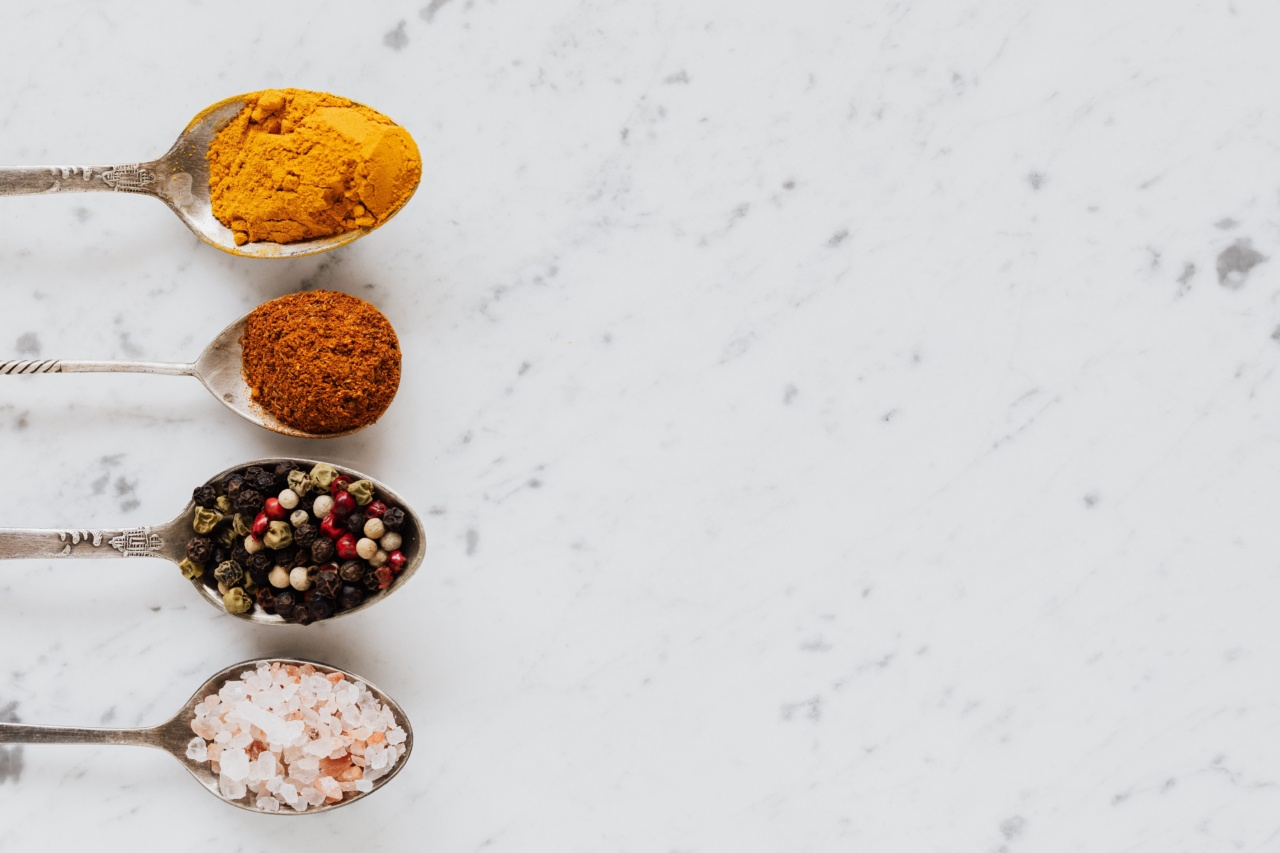Salt, also known as sodium chloride, is a commonly used ingredient in cooking and can enhance the flavor of meals. However, excessive salt intake can lead to various health risks, including high blood pressure, heart disease, and stroke.
It is essential to be mindful of the salt levels in the meals we consume to maintain a healthy lifestyle. In this article, we will explore the salt content in different meals and provide insights into hidden sources of salt that you may not be aware of.
1. Breakfast: Bacon and Eggs
Bacon and eggs are classic breakfast choices for many individuals. While these meals are delicious, they can also be high in salt. Bacon, in particular, is notorious for its high salt content.
Cured meats like bacon undergo a process that involves salting and smoking, resulting in a significant sodium level. Additionally, processed egg products, such as boxed egg mixes or pre-seasoned omelets, may also contain added salt to enhance flavor.
2. Lunch: Sandwiches
Sandwiches are a popular choice for a quick and convenient lunch. However, certain ingredients commonly found in sandwiches can contribute to high salt intake.
Deli meats, such as ham, roast beef, or turkey, are often cured or preserved with sodium-containing additives. Condiments like mayonnaise and mustard also contain salt. Choosing low-sodium alternatives and opting for fresh ingredients can help reduce the overall salt content in your sandwich.
3. Dinner: Chinese Takeout
Many people enjoy ordering Chinese takeout for dinner. However, these dishes can be loaded with hidden salt. Soy sauce, a staple in Chinese cuisine, is notoriously high in sodium.
Additionally, many Chinese dishes are stir-fried or cooked in sauces that contain high levels of salt. Fried rice, lo mein, and General Tso’s chicken are just a few examples of high-sodium Chinese dishes. Opting for steamed options and requesting less sauce can help reduce the salt intake.
4. Snack: Potato Chips
Potato chips are a popular snack choice worldwide. These crispy snacks can be addictively delicious, but they are also a significant source of hidden salt. Chips are typically seasoned with salt to enhance their taste.
Additionally, many commercial brands use various seasonings that contribute to a higher sodium content. If you are looking to curb your salt intake, consider opting for low-sodium or baked alternatives when satisfying your snack cravings.
5. Dessert: Ice Cream
Ice cream is a beloved treat for many, especially on hot summer days. While it may seem like an innocent indulgence, ice cream can contain surprising amounts of salt.
Salt is used in ice cream production to lower the freezing point of the mix, resulting in a smoother texture. However, this means that even sweet flavors of ice cream can have added salt. Be mindful of portion sizes and opt for lower salt alternatives or even homemade options to control your salt intake.
6. Restaurant Meals
Eating out can be enjoyable, but it can also be a hidden source of excessive salt. Restaurant meals, especially fast food or chain restaurants, often contain high levels of salt to enhance flavor and preserve ingredients.
Burgers, pizzas, and pasta dishes are commonly high in sodium due to added sauces, condiments, and processed meats. When dining out, consider asking for nutrition information and opting for lower sodium menu items or requesting less salt in your dish.
7. Canned Soups
Canned soups are a convenient option for a quick meal or snack. However, they can be loaded with salt to improve taste and extend shelf life.
Various types of soups, including tomato soup, chicken noodle soup, and even vegetable-based soups, often contain high levels of sodium. Opting for low-sodium or homemade soups allows you to control and reduce your salt intake.
8. Salads
Salads are often regarded as healthy meal options. However, certain salad dressings, toppings, and even pre-packaged salad kits can contain significant amounts of salt. Salad dressings, especially creamy ones like ranch or Caesar, can be high in sodium.
Additionally, toppings such as bacon bits, croutons, or cheese can contribute to hidden sources of salt. Opt for homemade dressings or choose vinaigrettes and use fresh ingredients to keep your salad low in salt.
9. Packaged Frozen Meals
For those seeking convenience, packaged frozen meals can be a quick and easy solution. However, these meals are notorious for their high salt content, as salt is used as a preservative.
Many frozen dinners, such as TV dinners and microwavable meals, contain processed meats, sauces, and seasonings, which all contribute to increased sodium levels. Limiting your consumption of frozen meals or choosing low-sodium options can help reduce your salt intake.
10. Homemade Cooking
Even when cooking meals at home, it is important to be mindful of the salt levels. Many recipes call for salt as a seasoning, and it can be easy to add more than necessary.
Experimenting with herbs, spices, and other flavor enhancers can help reduce the reliance on salt while still enjoying delicious homemade meals. Opting for fresh ingredients, using less salt, and gradually reducing the reliance on salt in your cooking can lead to healthier, low-sodium meals.
Conclusion
Being aware of the hidden sources of salt in various meals can help us make informed choices and reduce our overall salt intake.
By making simple adjustments such as choosing low-sodium alternatives, cooking at home, and requesting less salt when dining out, we can actively take steps towards a healthier lifestyle. It is essential to remember that while salt enhances flavor, moderation is key when it comes to salt consumption to prevent the negative health impacts associated with excessive sodium intake.

























